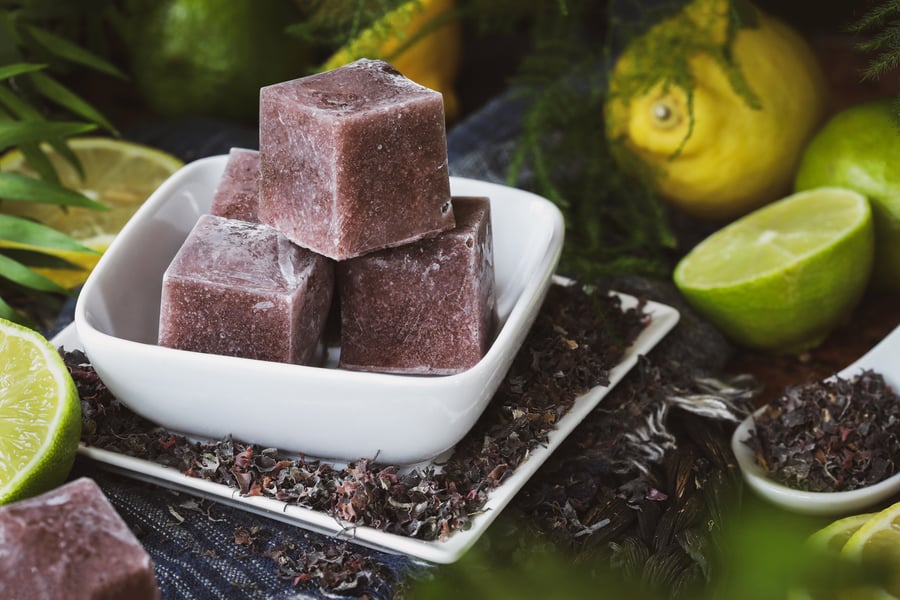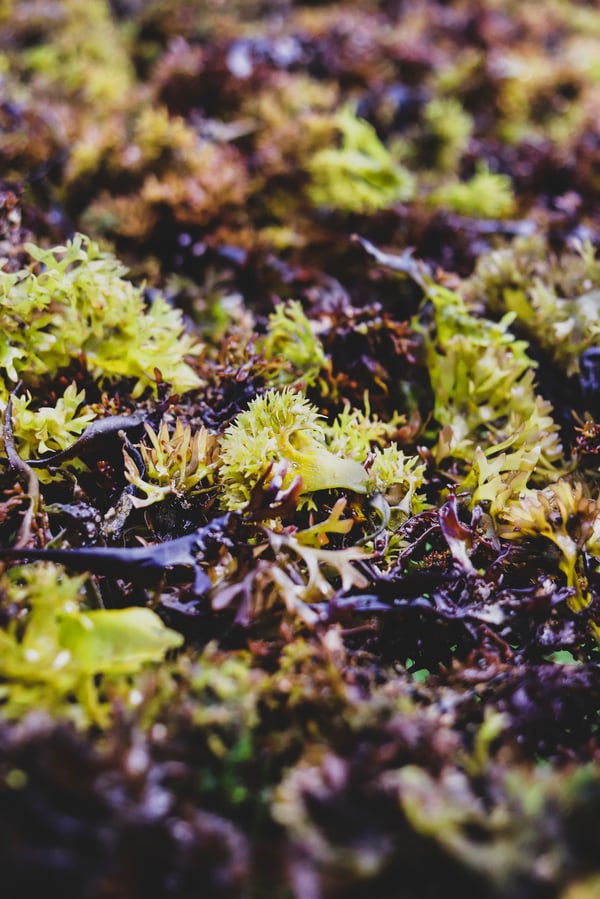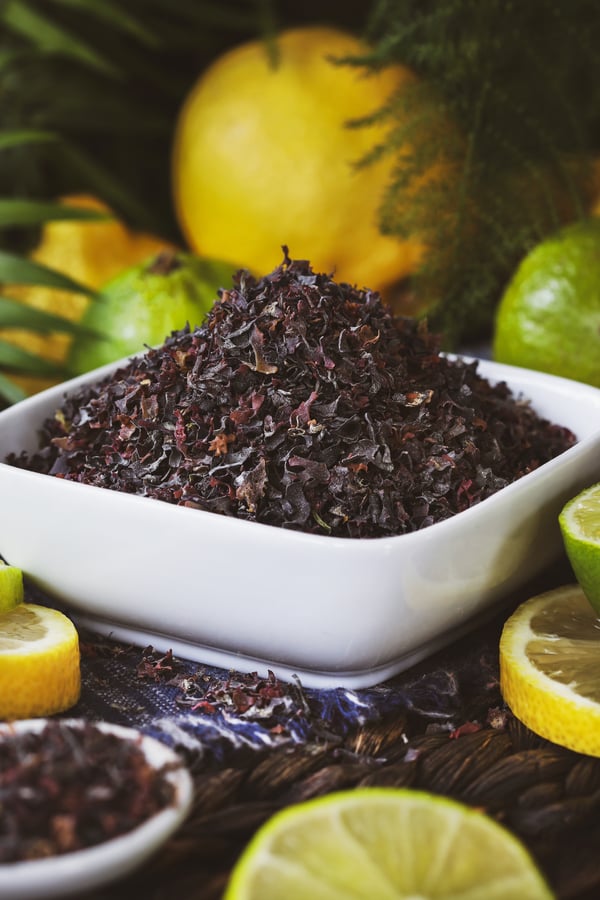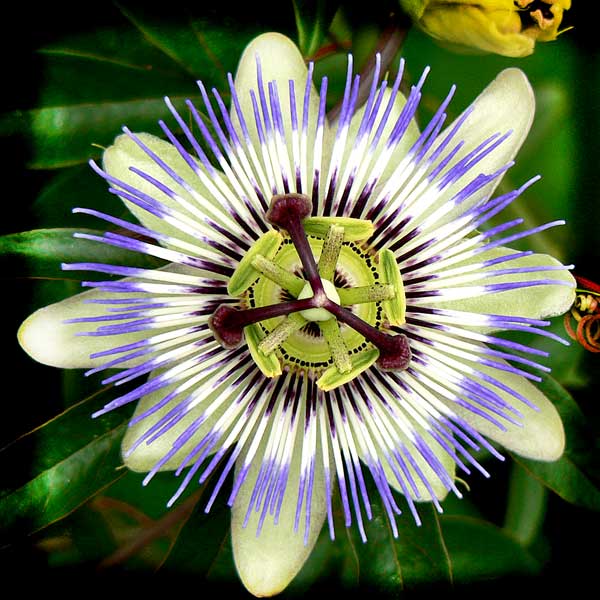There are over 12,000 species of seaweed drifting in synchrony with our ocean currents, but one type of these uniquely diverse sea botanicals has taken wellness communities by storm in recent years. Recipes and advertisements highlighting the nutritional benefits of “sea moss gel” have been buzzing around just about every corner of the wellness world, and for good reason! I first encountered sea moss on a Pinterest blog detailing a vegan “bone broth” recipe, which instantly hooked my attention. As a vegan with over a decade of my life spent experimenting with plant-based foods, replicating a vegan version of such an animal-oriented fare was not something I had considered to be a possibility before. This recipe sparked my interest in uncovering the endless array of creative uses and nutritional benefits the ocean provides for us in the form of aquatic grassy tangles: seaweed!
You may be asking yourself, “What is sea moss?” and I was right there with you. When I fell down the sea moss rabbit hole, I was surprised to learn that the term “sea moss” is not one specific species, or even a type of moss for that matter! Sea moss is an umbrella term encompassing thousands of variations of red algae (a.k.a. seaweed), that all contain vital nutrients, including iodine, magnesium, iron, folate, vitamin K, and calcium. The varieties you’re most likely to come across on the market today are Genus Gracilaria and Chondrus Crispus. Today I’ll be diving into Chondrus Crispus.
Chondrus Crispus, or Irish moss, grows its curly fronds along the rocky Atlantic coasts of Europe and North America, nestled in abundance in tidal pools around Ireland, Canada, Great Britain, and Maine. These relatively small algae grow on rocks, which is a rather unique characteristic that makes farming Chondrus Crispus uncommon, as most algae species are grown using rope systems that are insufficient for Irish moss cultivation. On the other hand, Genus Gracilaria, the second most common variation of sea moss I mentioned earlier, can indeed grow on ropes! I find this fact interesting, as people frequently use Genus Gracilaria and Chondrus Crispus interchangeably, even though they share few similarities aside from mineral content. Think of it like comparing apples to oranges but for the marine world!
With thousands of algae species lumped together under the sea moss umbrella term, it’s no wonder proper species identification can become a bit convoluted. The array of physical differences found within even the same species of algae could confuse a well-seasoned marine scientist at first glance! Contrasting appearances of Irish moss can range from elongated woven fingers to fanlike lacy branches, with hues varying from deep indigo, iridescent blue, mossy green, and yellow ochre. Differences in pigmentation among the Chondrus Crispus species are attributed to their unique accessory pigments, which aid in the process of photosynthesis by allowing light energy to absorb through a wider range of wavelengths. While Chlorophyll is the most notable accessory pigment responsible for green pigmentation in botanicals, red algae contains phycoerythrin (red), and phycocyanin (blue), which allow for a diverse spectrum of color possibilities across the same species.
Although most of us will never need to worry about proper species identification while foraging for Irish moss along the rocky coasts of Ireland, purchasing Chondrus Crispus online or in stores can pose its own set of confusing challenges, especially because it is crucial to opt for seaweed harvested using organic cultivation practices to protect our fragile oceanic ecosystems. To ensure the Irish moss you’re seeking is the correct species, purchase from a reputable organic source and verify that the botanical’s scientific name is clearly listed. You’ll be relieved to hear that Mountain Rose Herbs offers USDA Organic Certified Chondrus Crispus grown in the USA!
Now that you’ve procured the correct species of sea moss, the options to get creative with this gelatinous oceanic “superfood” are nearly unlimited! Irish moss gel only takes three simple ingredients and is a fantastic way to add a powerhouse of nutrients and minerals to your everyday diet. I find the relatively tasteless gel to be easily palatable on its own, and a spoonful each morning has provided me with a sustainable and pleasant energy boost throughout my day. The thickening properties in Irish moss are also a nutrient-boosting alternative for recipes that call for thickening agents, such as cornstarch or arrowroot powder. Add a spoonful to your winter soup recipes or blend a frozen gel cube into your morning smoothie. Personally, I plan to test out that vegan “bone broth” recipe I still haven’t gotten around to trying.
Sea Moss Gel Recipe
Makes approximately 4 cups.
Supplies
- High-speed blender or food processor
- Ice-cube tray molds (optional)
Ingredients
- 1/2 cup organic dried Irish Moss
- 1 1/4 cup filtered or spring water (plus more for soaking and cleaning)
- 2-3 organic lemons or limes (optional – see Pro-Tips)
Directions
- Place measured Irish moss in a large mixing bowl.
- Fill mixing bowl with cold water until the Irish moss is fully submerged (about 3/4 full). You’ll notice the moss will immediately begin to rehydrate and expand!
- Using your hands, begin to thoroughly wash your moss to remove any potential shell fragments, sand, crustaceans, etc.
- Drain dirty water and repeat steps 2-3 until the rinse water is clear.
- Fill your bowl of cleaned Irish moss with fresh water and fully submerge seaweed.
- Slice optional lemons or limes into quarters and squeeze juices into bowl. Add the squeezed citrus to the soaking liquid.
- Cover and set bowl aside to allow Irish moss to soak for one hour.
- Once Irish moss has finished soaking, drain all liquid from the bowl and transfer drained sea moss to a high-speed blender/food processor. Set aside.
- Measure 1 1/4 cups water into a pot and bring to a boil. Set aside to allow water to cool for a few minutes, then add to blender/food processor.
- Blend Irish moss and hot water on high for 2-3 minutes or until the mixture becomes fully cohesive and no seaweed particles remain.
- Allow blended gel to cool for a moment before transferring to an air-tight container or silicone ice cube trays. Irish moss gel will hold in the refrigerator for 3-4 weeks and frozen for up to 6 months. See pro-tips for storage recommendations.
Pro Tips
- Citrus fruit helps to alleviate the “scent of the sea” that Irish moss tends to emit. I do not find the scent unappealing, but the lemons or limes add a hint of citrusy freshness to the finished product that I find to be a worthwhile and welcomed addition to this recipe.
- My preferred storage method is silicone ice-cube trays, as I find it convenient to have pre-portioned servings ready for my morning smoothie creations!
Looking for more easy ways to add seaweed into your diet?
Give Our Vegan Poke Bowl Recipe with Seaweed a Try!
You May Also Enjoy
- Harvesting Seaweeds off the Coast of the Atlantic
- Seaweed Dry Face Mask Recipe
- Homemade Energy Gel with Chia & Cordyceps from Four Sigmatic
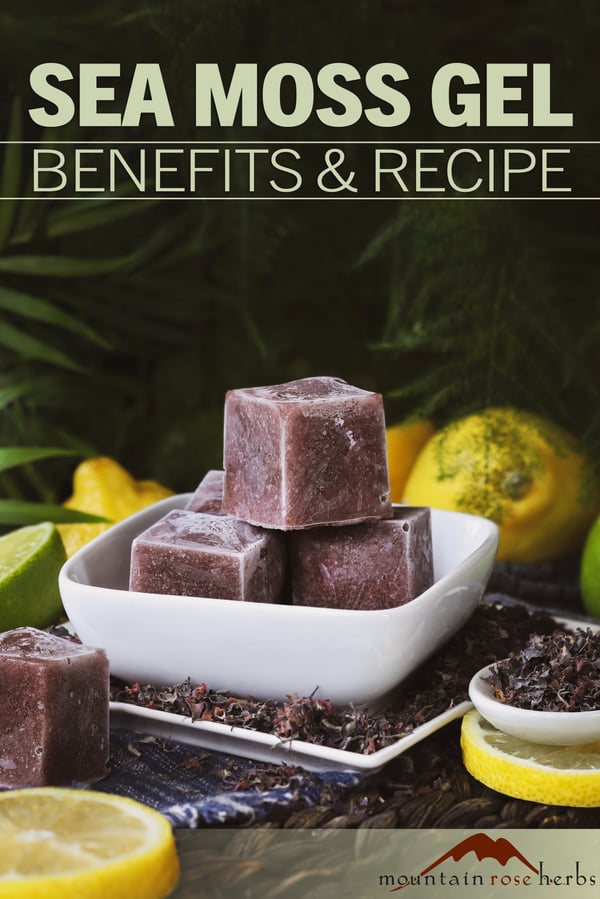
Cautions: Please speak with a qualified healthcare provider about the appropriate serving sizing for your needs prior to ingesting Irish moss. Additionally, if you have a thyroid condition, kidney issues, or are taking blood thinning medications, please do not ingest Chondrus Crispus except under the guidance of your physician.

